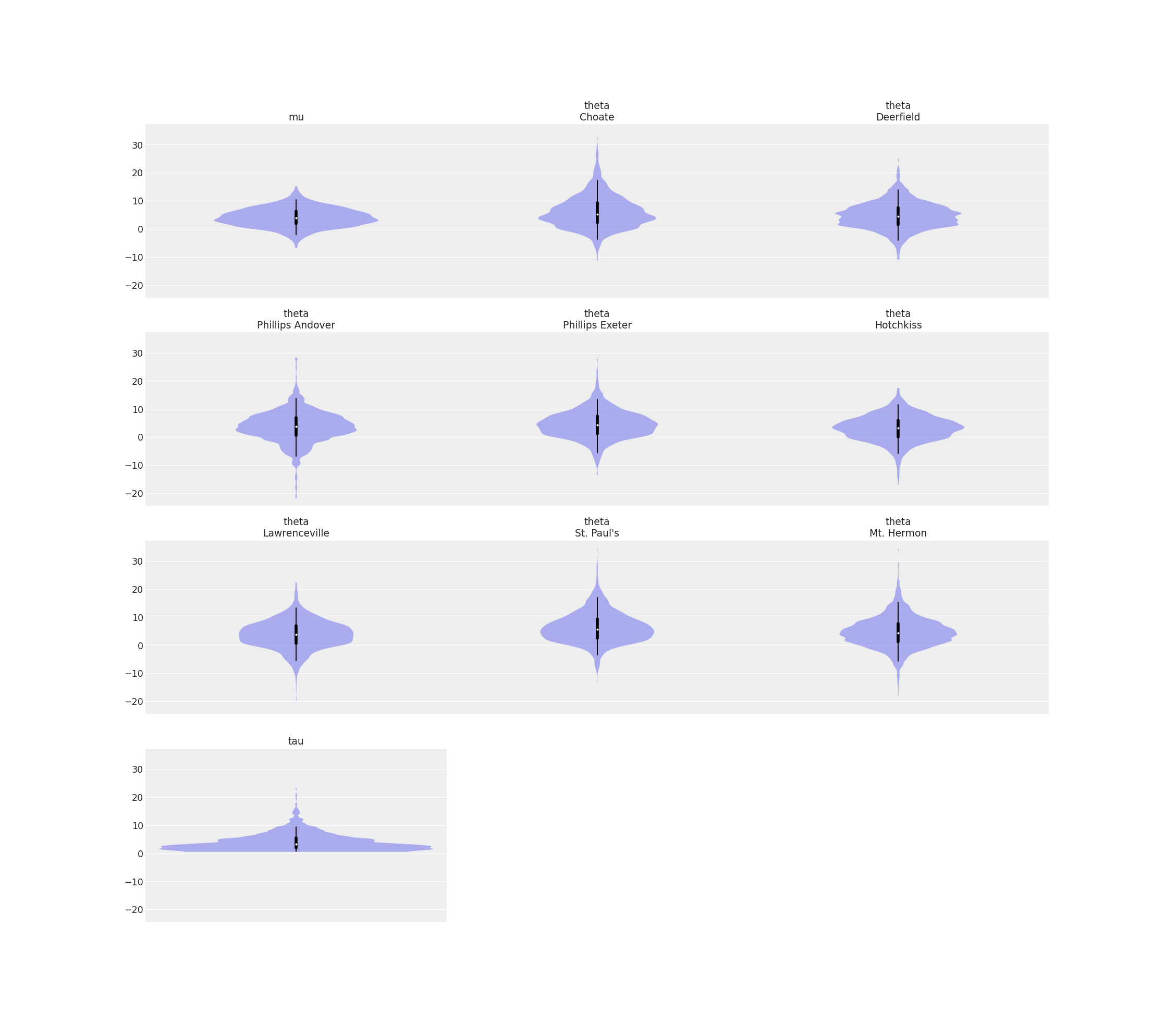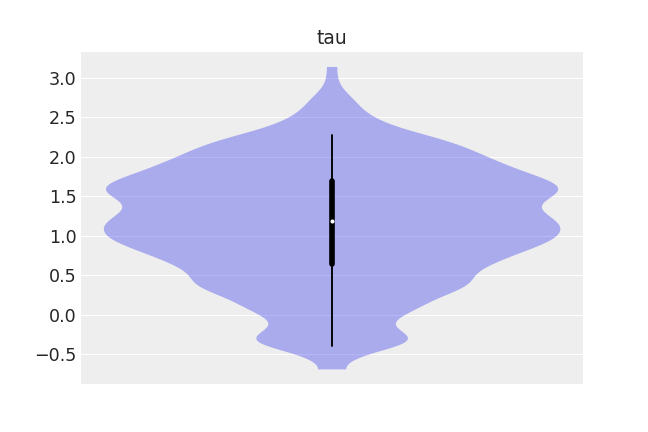arviz.plot_violin¶
-
arviz.plot_violin(data, var_names=None, filter_vars=None, transform=None, quartiles=True, rug=False, hdi_prob=None, shade=0.35, bw='default', circular=False, sharex=True, sharey=True, grid=None, figsize=None, textsize=None, labeller=None, ax=None, shade_kwargs=None, rug_kwargs=None, backend=None, backend_kwargs=None, show=None)[source]¶ Plot posterior of traces as violin plot.
- Parameters
- data: obj
Any object that can be converted to an az.InferenceData object Refer to documentation of az.convert_to_dataset for details
- var_names: list of variable names, optional
Variables to be plotted, if None all variable are plotted. Prefix the variables by ~ when you want to exclude them from the plot.
- filter_vars: {None, “like”, “regex”}, optional, default=None
If None (default), interpret var_names as the real variables names. If “like”, interpret var_names as substrings of the real variables names. If “regex”, interpret var_names as regular expressions on the real variables names. A la pandas.filter.
- transform: callable
Function to transform data (defaults to None i.e. the identity function)
- quartiles: bool, optional
Flag for plotting the interquartile range, in addition to the hdi_prob*100% intervals. Defaults to True
- rug: bool
If True adds a jittered rugplot. Defaults to False.
- hdi_prob: float, optional
Plots highest posterior density interval for chosen percentage of density. Defaults to 0.94.
- shade: float
Alpha blending value for the shaded area under the curve, between 0 (no shade) and 1 (opaque). Defaults to 0
- bw: float or str, optional
If numeric, indicates the bandwidth and must be positive. If str, indicates the method to estimate the bandwidth and must be one of “scott”, “silverman”, “isj” or “experimental” when circular is False and “taylor” (for now) when circular is True. Defaults to “default” which means “experimental” when variable is not circular and “taylor” when it is.
- circular: bool, optional.
If True, it interprets values is a circular variable measured in radians and a circular KDE is used. Defaults to False.
- gridtuple
Number of rows and columns. Defaults to None, the rows and columns are automatically inferred.
- figsize: tuple
Figure size. If None it will be defined automatically.
- textsize: int
Text size of the point_estimates, axis ticks, and highest density interval. If None it will be autoscaled based on figsize.
- labellerlabeller instance, optional
Class providing the method make_label_vert to generate the labels in the plot titles. Read the Label guide for more details and usage examples.
- sharex: bool
Defaults to True, violinplots share a common x-axis scale.
- sharey: bool
Defaults to True, violinplots share a common y-axis scale.
- ax: numpy array-like of matplotlib axes or bokeh figures, optional
A 2D array of locations into which to plot the densities. If not supplied, Arviz will create its own array of plot areas (and return it).
- shade_kwargs: dicts, optional
Additional keywords passed to fill_between, or barh to control the shade.
- rug_kwargs: dict
Keywords passed to the rug plot. If true only the righ half side of the violin will be plotted.
- backend: str, optional
Select plotting backend {“matplotlib”,”bokeh”}. Default “matplotlib”.
- backend_kwargs: bool, optional
These are kwargs specific to the backend being used. For additional documentation check the plotting method of the backend.
- show: bool, optional
Call backend show function.
- Returns
- axes: matplotlib axes or bokeh figures
Notes
If multiple chains are provided for a variable they will be combined
Examples
Show a default violin plot
>>> import arviz as az >>> data = az.load_arviz_data('centered_eight') >>> az.plot_violin(data)

Show a default violin plot, but with a transformation applied to the data
>>> az.plot_violin(data, var_names="tau", transform=np.log)
